In this article, learn the benefits of Montessori flower arranging activities, how to set the activities up, and how to present flower arranging to your child.
What is a Montessori flower-arranging activity?
Montessori is known for the Practical Life work involved in the Method. Dr. Maria Montessori observed that children prefer real-life experiences over toys and pretend play.
Lessons, like flower arranging, are woven throughout daily activities in Montessori primary classrooms and Montessori homes all over the world.
These activities give children opportunities to imitate adults in productive ways.
Practical Life activities utilize items sized for children and prepared meticulously by caregivers in ways that allow them to develop skills that prepare them for future academics and life.
These activities are very enjoyable and satisfying for young children.
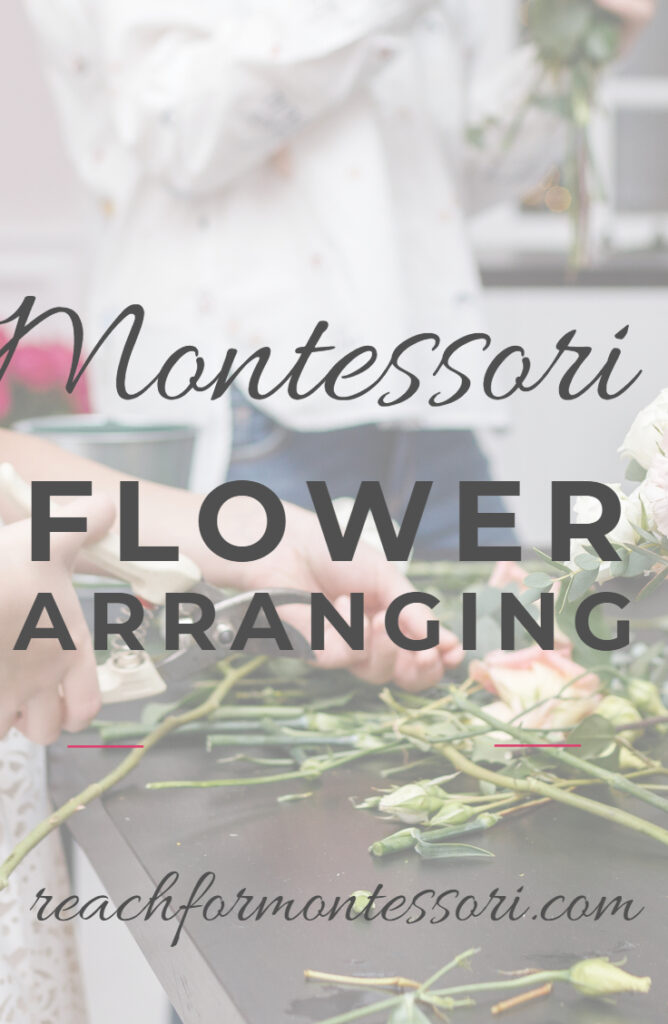
What are the benefits of flower arranging for kids?
As stated above, Practical Life activities serve purposes beyond just teaching a child how to accomplish a certain task.
The Montessori Practical Life activity of flower arranging serves several purposes.
Care of Environment activities are a type of practical life activity that encourage children to care for their classrooms, homes, and outdoors.
Activities that show children how to care for and improve living spaces for themselves and others are considered Care of Environment activities.
Montessori flower arranging is classified as a Care of Environment activity.
Flower arranging, however, is a simple activity that many people find relaxing and enjoyable. This qualifies flower arranging as a self-care activity, as well.
Flower arranging is a wonderful way to teach your child to care for the environment and care for themselves.
In addition to learning care of the environment and self-care through this activity, flower arranging provides opportunities for Cosmic Education lessons.
Cosmic education can be woven throughout all Montessori activities, as well as general daily life.
Working with nature-based activities provides tangible components to cosmic lessons, which can be easier for children to understand.
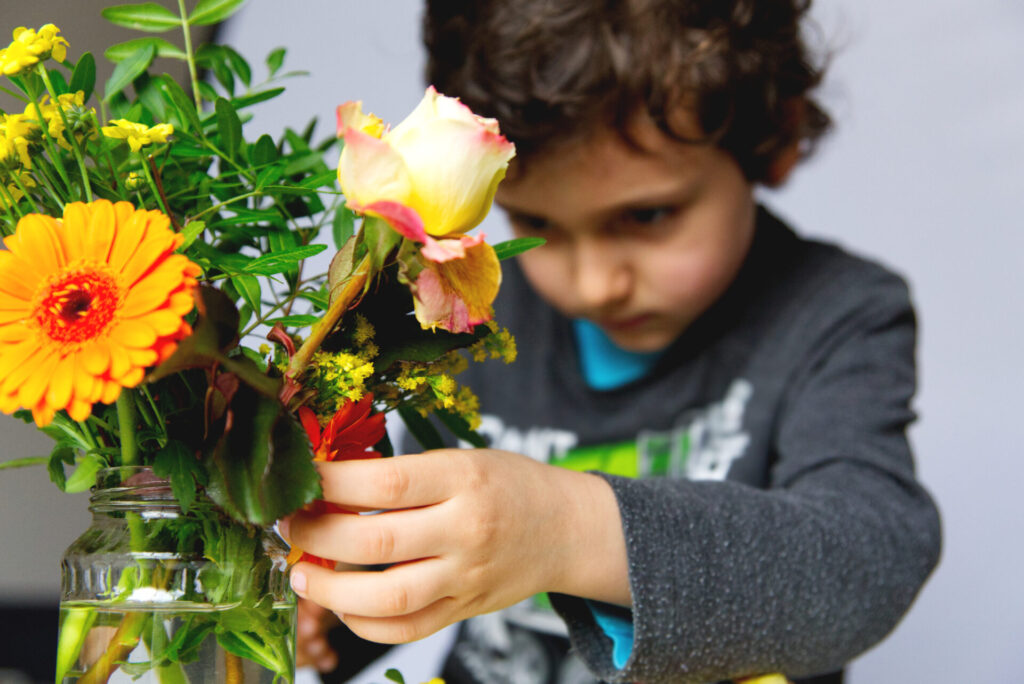
Some cosmic questions for this activity are:
“Why is it important to compost?”
“How does it help other people feel better when we give them flowers?”
“What animals and insects need flowers and what are some things we can do to help them?”
“What are some occasions where giving people flowers can help them feel happier?”
The direct and indirect aims of learning how to arrange a vase of flowers:
- Teaches children how to arrange flowers
- Helps develop fine motor skills
- Helps a child control their body movement
- Helps to fine-tune a child's senses
- Teaches an appreciation of beauty and nature
- It's an early botany lesson
- Helps critical thinking and decision-making
- Increases confidence
- Gross motor activity
Fine motor skills: holding the flower between fingers (pincer grasp), use of scissors
Gross motor and body movement: walking to collect flowers, carefully pouring water from pitcher to vase
Sensory activity: smell and color of flowers, visual discrimination of judging the amount of water to pour into the vase and length of stem to be cut
Decision making: figuring out where to put the flowers in the vase to make the flower arrangement pleasing to the eye, choosing where to place the finished flower arrangement
Botany lesson: discussing the parts of a flower (petal, ovary, stigma, carpel, stamen, sepal) and names of different flowers
Confidence: feeling good about their new ability to make a flower arrangement, confident in their ability to do something that can make others smile
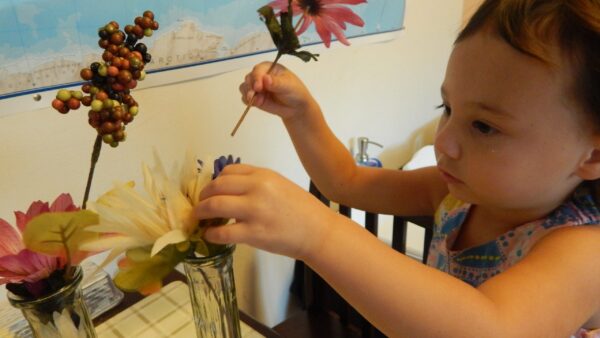
Points of interest:
- the scent of the flowers
- the contrast of one color against another
- pouring the water from the pitcher into the vase
How to present a Montessori flower-arranging activity
Flower arranging is a simple presentation that is enjoyable to both the caregiver and the child.
This can be presented in a Montessori learning environment, however, it is a very lovely activity to present as a parent or caregiver in the home.
The gathering of flowers is a wonderful experience in itself and is best shared by a close loved one, when possible, for the first time.
This Practical Life lesson can be presented to very young children or even older toddlers, however, depending on the child's age, adult supervision may be necessary when the child wants to repeat this activity on their own.
Montessori flower arranging supplies:
- small vase (a variety of flower vases is optimal, but not necessary)
- fresh flowers (real flowers are preferable, but silk flowers can be used, as well)
- small pitcher (small metal pitcher is recommended, though glass is fine)
- aprons
- funnel
- sponge
- cloth
- coaster (for placing finished arrangement around the house)
- scissors
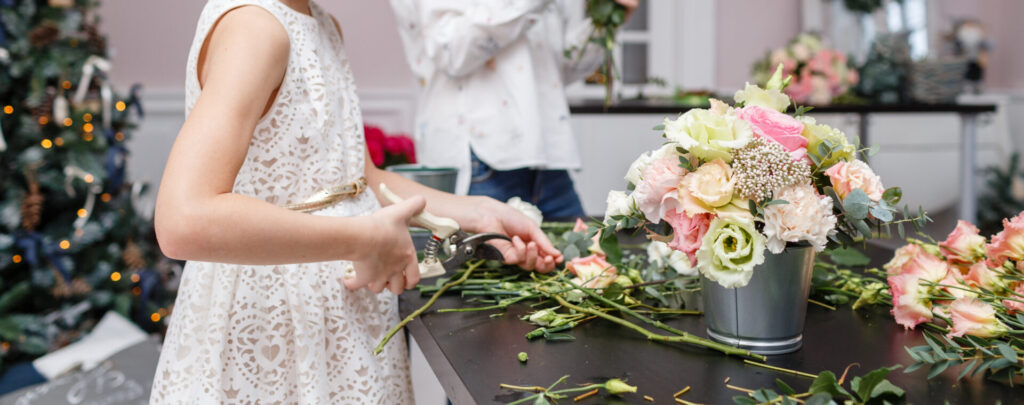
Steps to presentation:
- Gather flowers
- Place all supplies and flowers on table on top of the mat on the table (on a tray)
- put on aprons
- Fill the pitcher 1/2-3/4 with cold water
- Take the vase from the tray and place it on the table
- Pour the water from the pitcher into the vase using the funnel
- Dab the mouth of the pitcher with a sponge to prevent dripping
- Pick a flower from the tray and measure it against the vase to see if it will fit
- If the flower is too long, tell your child you will cut the stem of the flower to the size of the vase
- Pull any wilted leaves from the stem
- Place the cut flower into the vase
- Repeat until all the cut flowers have been arranged in the vase
- Clean up and put all the supplies away
When the flower arranging activity is finished, show your child how to bring the flower stems and wilted leaves to the compost bin.
Any drips and spills should be dried with the cloth.
Picking just the right spot for their beautiful flower arrangement was the best part of the activity for all of my children.
If enough flowers and vases are available to you, I suggest that you set this activity up for multiple flower arrangements to be made.
This gives a child multiple opportunities to improve the aesthetic of various rooms throughout the home.
You will notice your child putting as much or even more thought into the placement of their flower arrangement(s) as they did in actually arranging the flowers.
They may make comments about placing the flowers where people will see them when they walk into a room.
This is a sign of developing empathy. It is a wonderful thing to witness following such a beautiful activity.
This is the Montessori way of presenting flower arranging to a child.
As with every Montessori activity, it is possible to adapt it to the needs of your child and your situation.
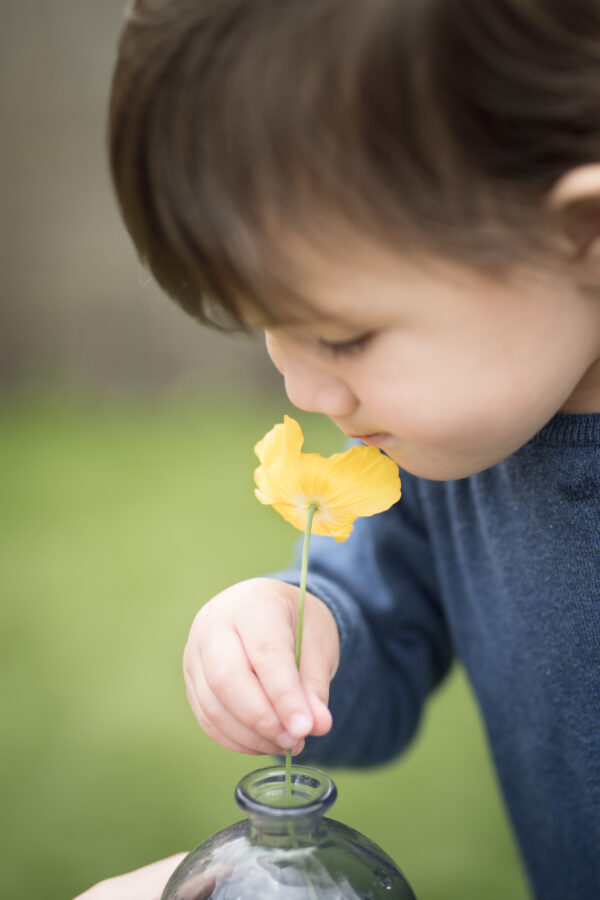
This can mean using silk flowers or using real flowers and cutting them ahead of time. In the absence of flowers, sticks, leaves, or long grass blades can be used.
Dr. Montessori said, “Scientific observation then has established that education is not what the teacher gives; education is a natural process spontaneously carried out by the human individual, and is acquired not by listening to words but by experiences upon the environment.”
Has your child had the opportunity to make their own flower arrangement? Did they show a sense of pride over the vase of flower they arranged?
Cheers and don't forget to subscribe!
